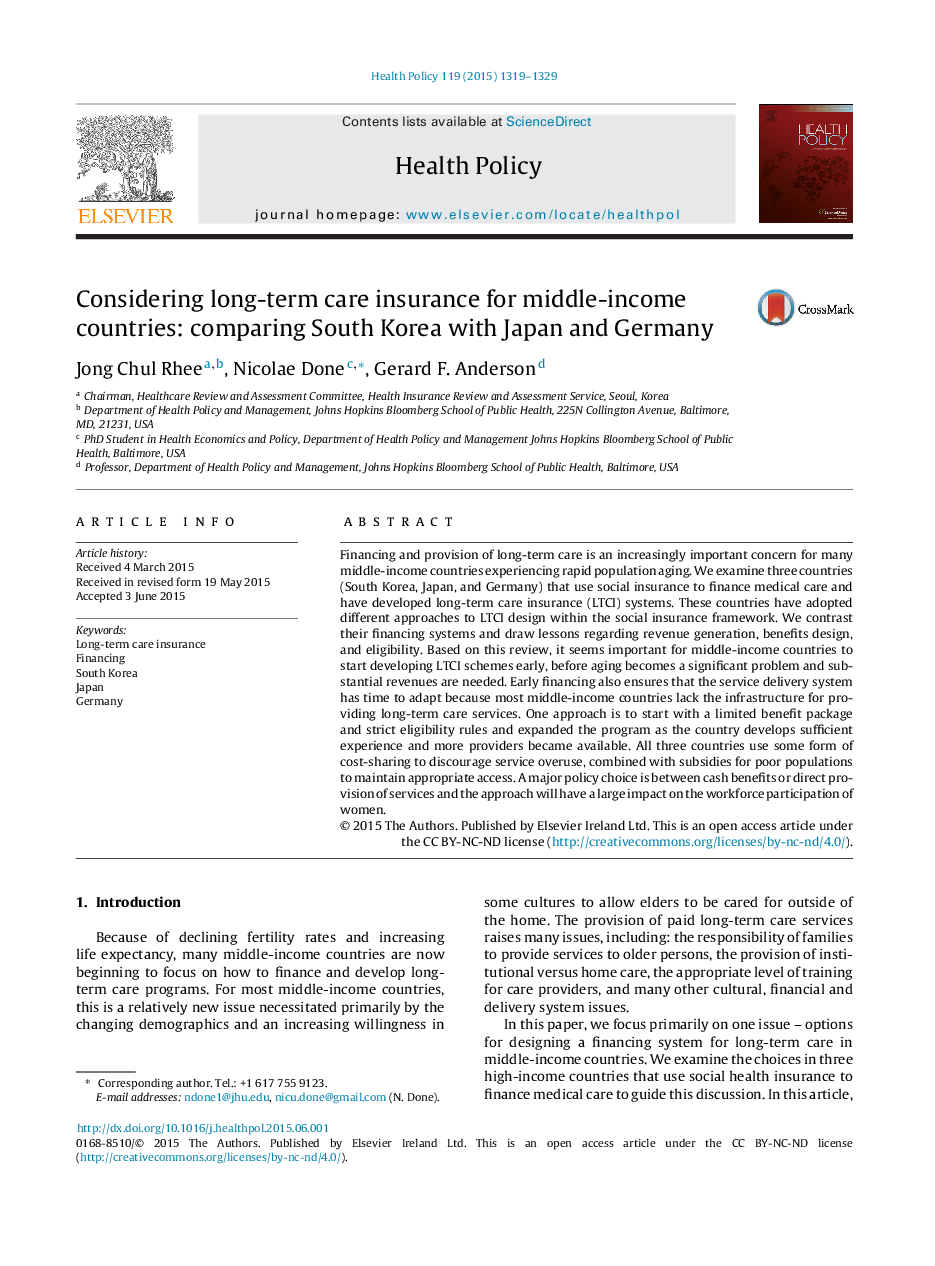| کد مقاله | کد نشریه | سال انتشار | مقاله انگلیسی | نسخه تمام متن |
|---|---|---|---|---|
| 6239232 | 1278990 | 2015 | 11 صفحه PDF | دانلود رایگان |
- We examine 3 countries that use social insurance systems to finance long-term care.
- Middle-income countries should start early with smaller LTCI schemes, then expand.
- Cost-sharing to discourage overuse can be combined with subsidies to ensure access.
- Allowing choice of cash benefits or direct provision has an impact on womens' workforce participation.
Financing and provision of long-term care is an increasingly important concern for many middle-income countries experiencing rapid population aging. We examine three countries (South Korea, Japan, and Germany) that use social insurance to finance medical care and have developed long-term care insurance (LTCI) systems. These countries have adopted different approaches to LTCI design within the social insurance framework. We contrast their financing systems and draw lessons regarding revenue generation, benefits design, and eligibility. Based on this review, it seems important for middle-income countries to start developing LTCI schemes early, before aging becomes a significant problem and substantial revenues are needed. Early financing also ensures that the service delivery system has time to adapt because most middle-income countries lack the infrastructure for providing long-term care services. One approach is to start with a limited benefit package and strict eligibility rules and expanded the program as the country develops sufficient experience and more providers became available. All three countries use some form of cost-sharing to discourage service overuse, combined with subsidies for poor populations to maintain appropriate access. A major policy choice is between cash benefits or direct provision of services and the approach will have a large impact on the workforce participation of women.
Journal: Health Policy - Volume 119, Issue 10, October 2015, Pages 1319-1329
